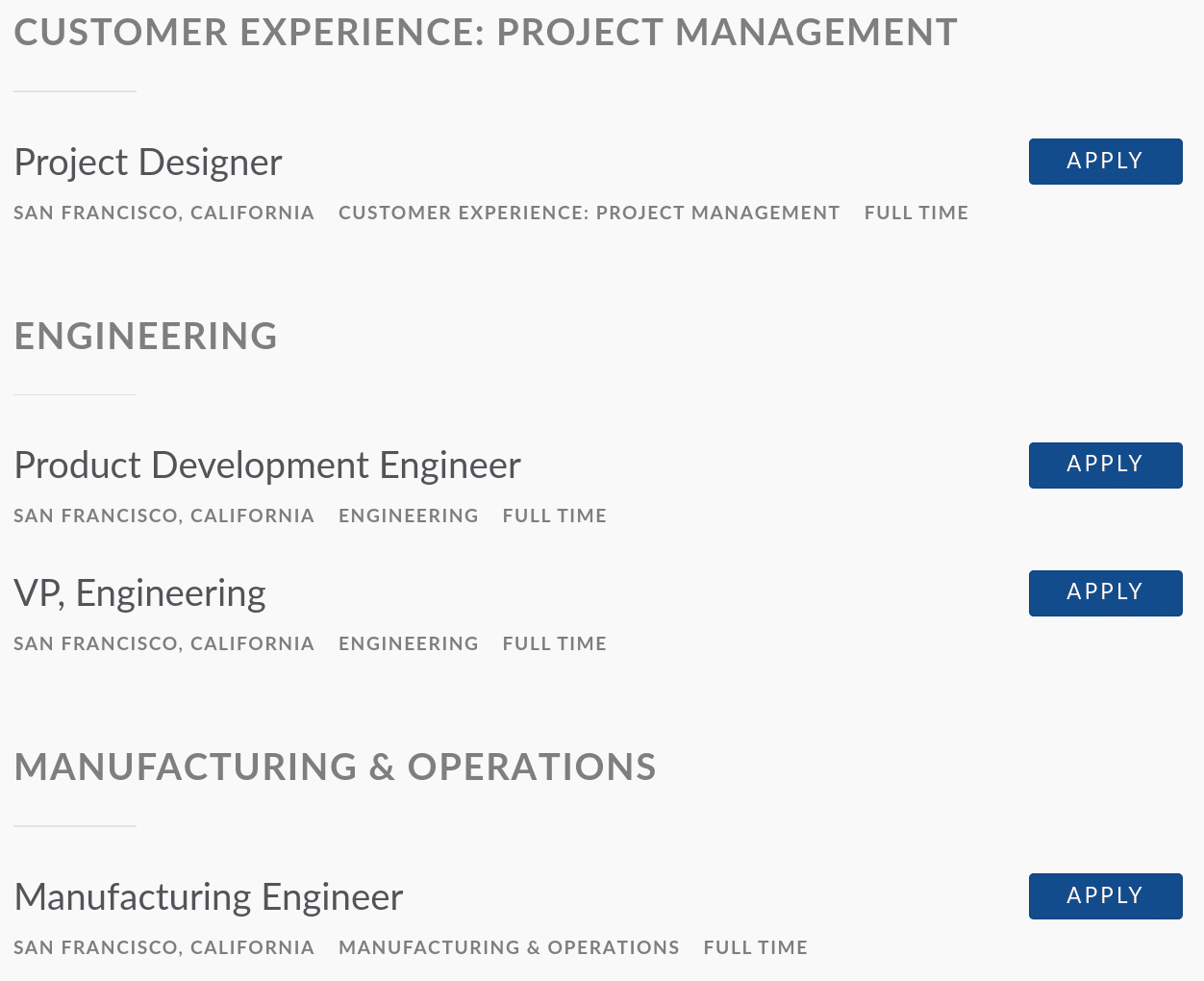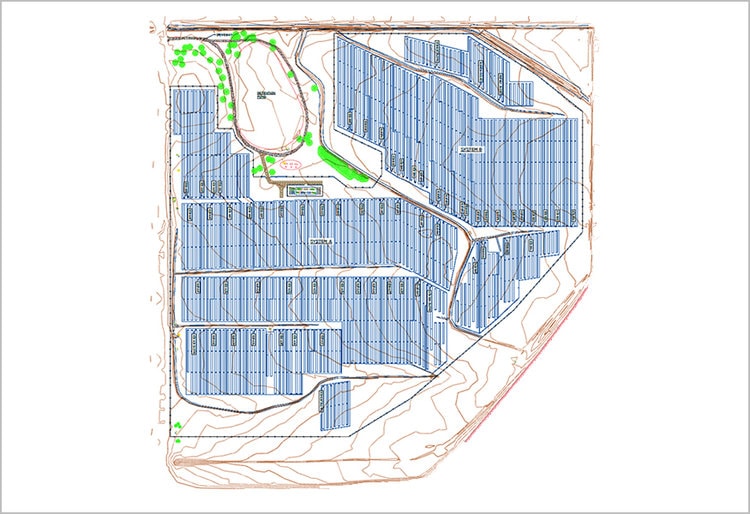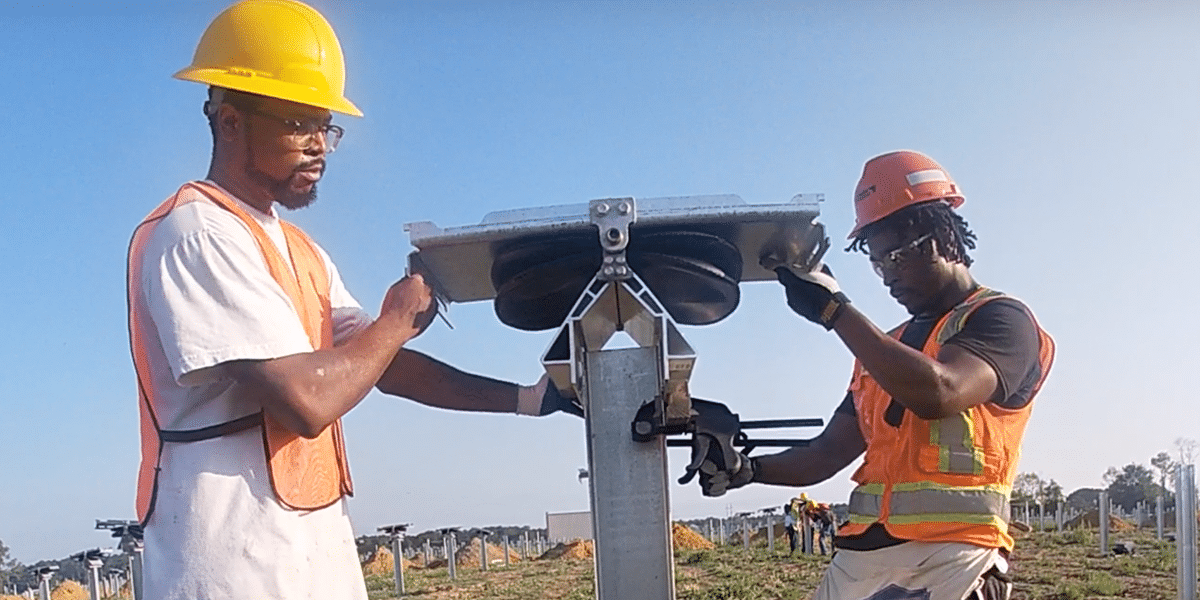Sunfolding says they have over 19 million hours – about 2,168 years – of system-operational time, claiming more than 99.99% uptime. That’s about 52 minutes of downtime, per year. So they’ve got that going for them.
The single-axis tracker maker has also raised $32 million in a Series B growth funding round, with G2VP and Macquarie Capital among the investors. Sunfolding says the funds will be used to expand U.S.-based manufacturing and assembly, purchasing volume from suppliers, as well the company’s operations and sales teams – specifically helping the growth of the T29 tracking system (PDF specification pages) towards an internal goal of scaling 500% to 1 GW of projects on the books by the end of 2020.
In case you’re looking, submit a resume here even if four jobs listed (below) don’t match, as I’d bet this list will grow.

Sunfolding’s product is made of two bolt sizes, and three structural components – its AirDrive, steel posts, and clips to attach the modules. Reminds me of something someone smart once said – “Everything should be made as simple as possible, but no simpler.”
The secret sauce is based on AirDrive – a “pneumatically-actuated antagonistic bellows design” – which turn the trackers toward the sun. There also happen to be three patents listed under Sunfolding’s name (lower left images below from those patents). The lower right image is extracted from their ARPA-E Impact Sheet in which they showed opportunity for lowering the cost of solar electricity via several pathways, including lower installation costs from labor (65% lower installation time for the current T29) and fewer components, and the aforementioned increased uptime.
Sunfolding notes that T29 features a stronger and lighter actuator that relies on half the actuator bolts, weighs 20% less, and requires 15% fewer posts per megawatt compared to its predecessor. The company documents state the one continuous maintenance requirement was the need to change the air filter. This is a reminder that the AirDrive is in fact assembled by a Tennessee company that makes air brakes for trucks.
The racking system can be installed on sites with up to 25% grades. This suggests savings in that they lower land preparation costs, while also bringing more complex terrain – less farmable land – into the equation for possible solar development.
The company’s project portfolio includes 30 booked/under construction/completed projects across the USA totalling 200 MW, with a recent addition of a 100 MW portfolio being develop for a new customer. Included among their project is a 39 MW facility in Imperial County, California and a 10 MW site that was able to be installed on the below complex layout and topographic map, that also aligned the 1-string electrical design.

And here’s where I’d like to point out that company founder, and current CTO, Leila Madrone has managed to claim the name “robot” for her LinkedIn profile. Madrone’s employment history includes robot design for NASA and an education at MIT.
This content is protected by copyright and may not be reused. If you want to cooperate with us and would like to reuse some of our content, please contact: editors@pv-magazine.com.











By submitting this form you agree to pv magazine using your data for the purposes of publishing your comment.
Your personal data will only be disclosed or otherwise transmitted to third parties for the purposes of spam filtering or if this is necessary for technical maintenance of the website. Any other transfer to third parties will not take place unless this is justified on the basis of applicable data protection regulations or if pv magazine is legally obliged to do so.
You may revoke this consent at any time with effect for the future, in which case your personal data will be deleted immediately. Otherwise, your data will be deleted if pv magazine has processed your request or the purpose of data storage is fulfilled.
Further information on data privacy can be found in our Data Protection Policy.